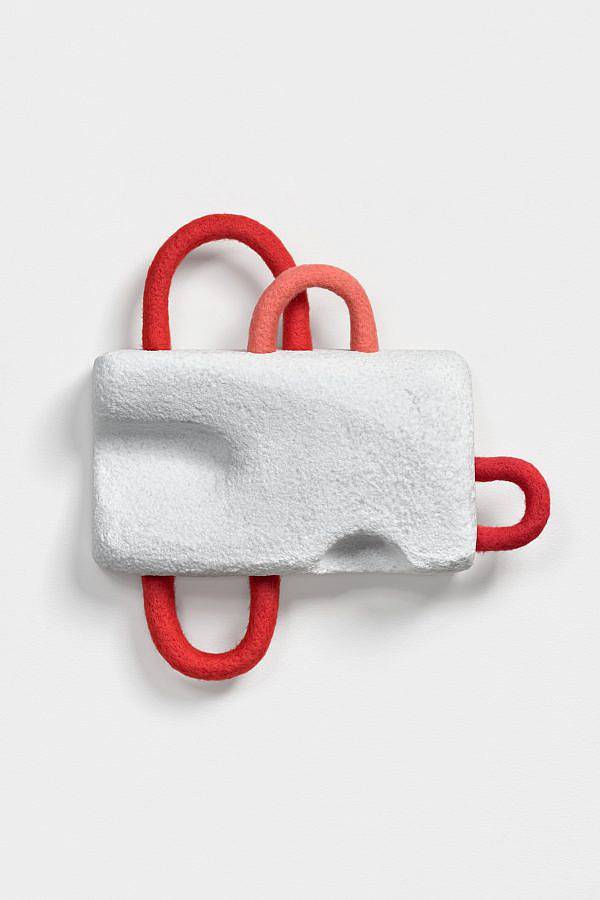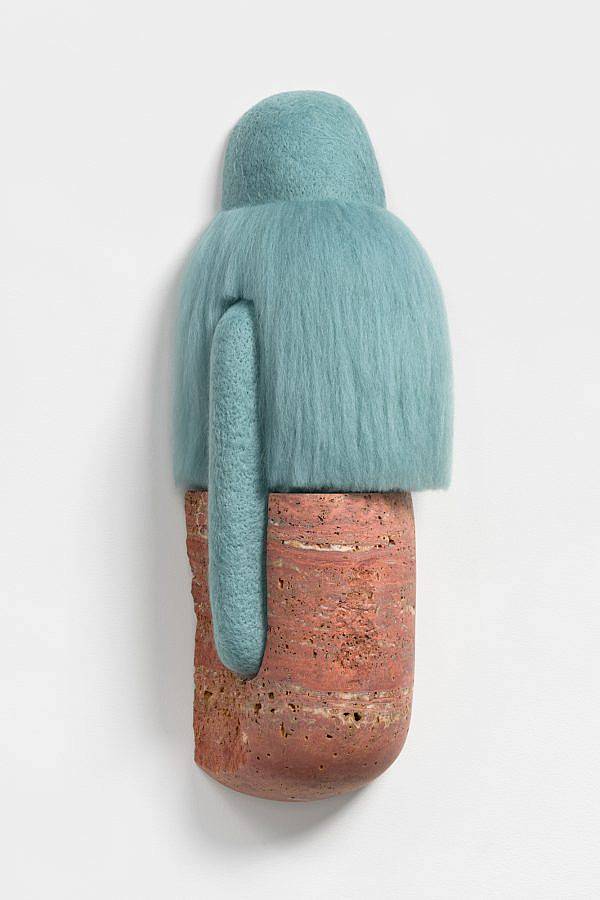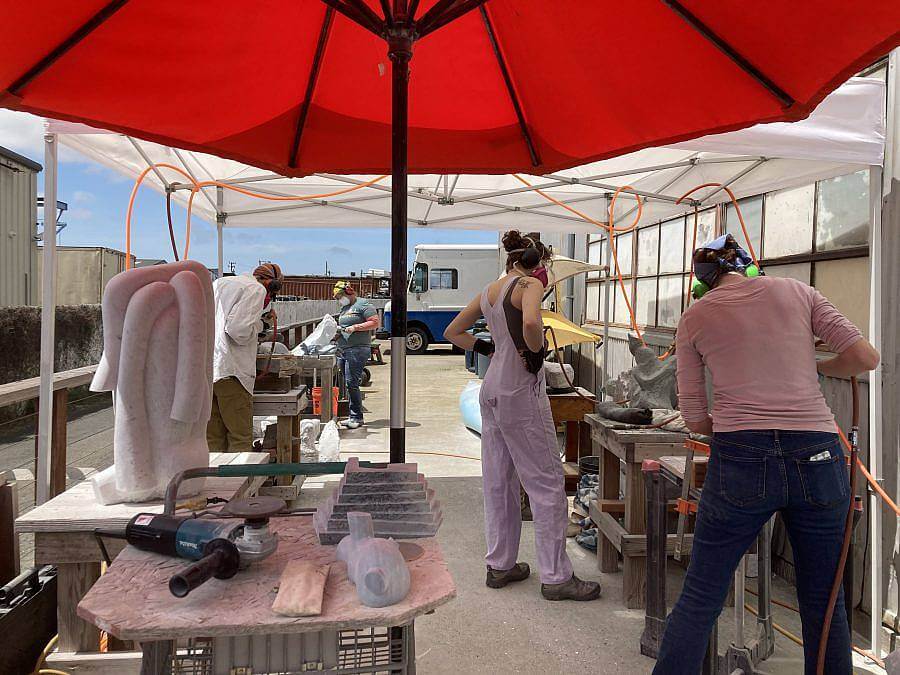Tell us about yourself, your background, and what you do.
I am a sculptor and educator; I spend most of my time talking about or making sculpture (sometimes both at the same time!).
How would you describe your practice? What does your process look like?
My process involves a lot of play, which can sound so trivial but it is really where discovery happens. I often go out into my rock pile and start carving without any idea. Allowing myself time without any preconceived idea frees me up and inevitably gives me forms that I would never have thought of before.

Is there a specific moment you can recall which prompted you to synthesize stone and textile?
I have worked with stone for many years now, building up my skills, experimenting, etc. I have always loved textiles and the combination of soft and hard so it just made sense to try it. It was fairly early on and might have been only my 4th or 5th stone carving when I first tried to merge the two. And after that, I just continued to experiment over the years through successes and failures.

You’ve mentioned in prior interviews that your refusal to hollow out clay is what eventually led you into stone carving. What do you enjoy most about working with stone? What physical and conceptual qualities does it offer that other sculptural materials might not?
I love everything about stone carving, the truth and history it contains, the dust, the resistance, the problem solving and perseverance it demands. I think one of the challenges in working with a material that has such a long history is that you need to find ways to give it relevance and speak to a contemporary audience. For me, clay is too open, there are almost no parameters and I find myself joyfully manipulating the material without resistance. Imposed limitations are always helpful toward discovering something new. Stone is a material that pushes back, the limitations are set by the size of block, hardness, color and sometimes time constraints. As an artist, I then have to decide shape, texture, etc. within the given limitations. This kind of problem solving gets me interested and excited to find out what will happen – I am most interested in an exchange with a material rather than me always pushing my agenda or exerting influence/control over it.

Do you consider your work to be humorous? If so, how is humor situated in your practice?
Humor is important to me in life and therefore in art. My life and art practice are tied up in one another. I want my work to speak to people in different ways and humor is a good way to get people ready to see something they might not be super comfortable with initially.

How has teaching evolved or influenced your practice? What is your favorite part about being an educator?
I love teaching because I am addicted to learning. The students teach me far more than I can ever give them. I love the exchanges that happen in the classroom and specifically teaching at a community college allows me the opportunity to work with people from all walks of life.
If you had not pursued art, what do you think you’d be doing?
Building houses or working with plants.

Describe your current studio or workspace.
My current studio is a fairly large warehouse space with tons of natural light pouring in. I do most of my dirty, dusty carving out on a loading dock. Here is a photo of some of my friends sharing a carving day with me.
Who are some of your favorite artists?
I like to look for artists that use materials in interesting and unusual ways. A few of the artists that have influenced me over the years are:
Louise Bourgeois and Martin Puryear for their ability to skillfully work with any material.
Jessica Stockholder for her dedication to formal elements and fearlessness.
I appreciate the way that Rachel Feinstein and Dennis Oppenheim use humor and familiar materials to bring us something new.
I find the organic forms of Richard Deacon compelling. He is a great example of someone who works hard and is extremely prolific.
I am obsessed with Ron Nagel’s color combinations, textures, and (although small) very powerful forms (often humorous).

What was the last exhibition or show you saw that stuck out to you?
This is reaching way back but I think one of the most influential exhibitions I have ever seen was a retrospective of Eva Hesse’s work at SFMOMA in 2001. I was in college at the time and I dragged my friends to see the show. I didn’t realize until years later how much seeing her work in person changed my life.
All images courtesy of artist. Interview conducted and edited by Ellie Schrader.
